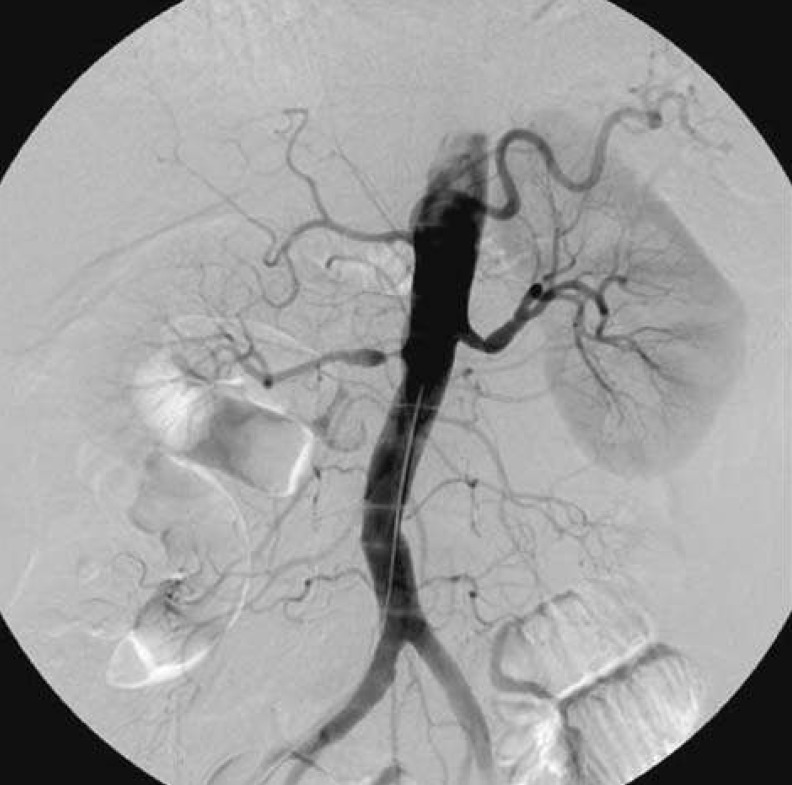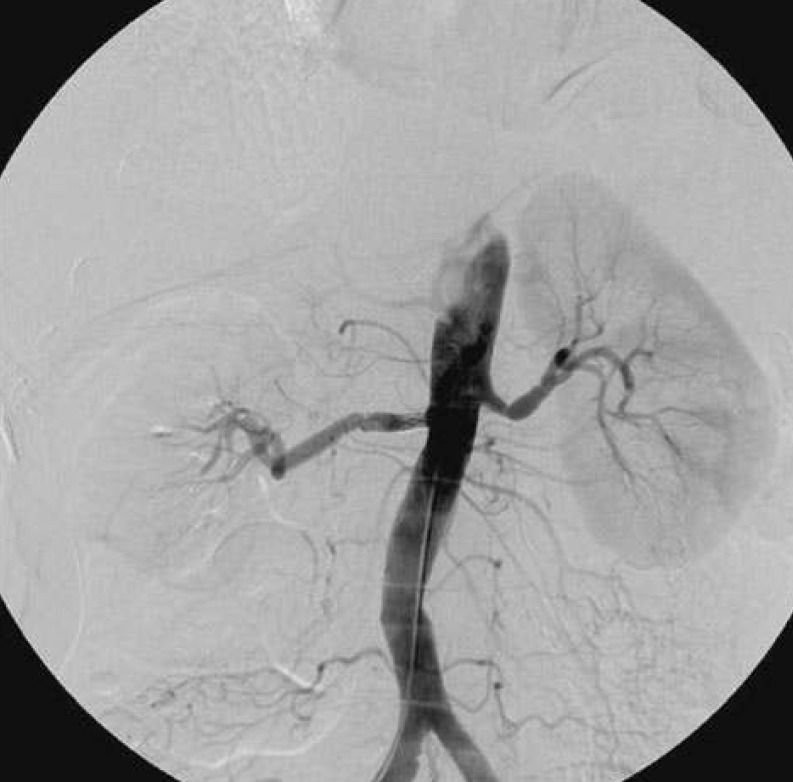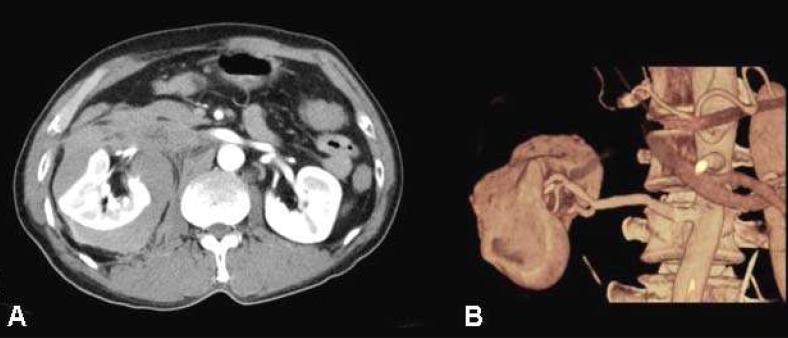Electrolyte Blood Press.
2007 Dec;5(2):136-139. 10.5049/EBP.2007.5.2.136.
Renal Subcapsular Hematoma: A Consequence of Reperfusion Injury of Long Standing Renal Artery Stenosis
- Affiliations
-
- 1Department of Internal Medicine and Renal Regeneration Laboratory, Chonbuk National University Medical School, Jeonju, Korea. parksk@chonbuk.ac.kr
- 2Department of Diagnostic Radiology, Research Institute of Clinical Medicine, Chonbuk National University Medical School, Jeonju, Korea.
- KMID: 2052297
- DOI: http://doi.org/10.5049/EBP.2007.5.2.136
Abstract
- Renal artery stenosis is a cause of secondary hypertension which can be cured by surgical or radiological intervention such as percutaneous transluminal renal artery stent placement. In this case we present a subcapsular hematoma of the kidney, a complication following percutaneous transluminal stent placement in the renal artery. Reperfusion injury to the kidney may be a possible mechanism of subcapsular hematoma of the kidney. Long standing severe renal artery stenosis and high pre- and post- procedure pressure gradient might contribute to the complication.
MeSH Terms
Figure
Reference
-
1. Ivanovic V, McKusick MA, Johnson CM 3rd, Sabater EA, Andrews JC, Breen JF, Bjarnason H, Misra S, Stanson AW. Renal artery stent placement: complications at a single tertiary care center. J Vasc Interv Radiol. 2003; 14:217–225. PMID: 12582190.
Article2. Nikolsky E, Patil CV, Beyar R. Ipsilateral intracerebral hemorrhage following carotid stent-assisted angioplasty: a manifestation of hyperperfusion syndrome-a case report. Angiology. 2002; 53:217–223. PMID: 11952114.3. Martin LG, Rundback JH, Sacks D, Cardella JF, Rees CR, Matsumoto AH, Meranze SG, Schwartzberg MS, Silverstein MI, Lewis CA. Society of Interventional Radiology Standards of Practice Committee. Quality improvement guidelines for angiography, angioplasty, and stent placement in the diagnosis and treatment of renal artery stenosis in adults. J Vasc Interv Radiol. 2002; 13:1069–1083. PMID: 12427805.
Article4. Perkovic V, Thomson KR, Mitchell PJ, Gibson RN, Atkinson N, Field PL, Becker GJ. Treatment of renovascular disease with percutaneous stent insertion: long-term outcomes. Australas Radiol. 2001; 45:438–443. PMID: 11903175.
Article
- Full Text Links
- Actions
-
Cited
- CITED
-
- Close
- Share
- Similar articles
-
- A Case of Spontaneous Renal Subcapsular Hematoma and Acute Renal Failure Developed after Cesarean Section with Severe Preeclampsia
- Two cases of subcapsular renal hematoma as a complication of acute pyelonephritis
- Renal Subcapsular Hematoma after Percutaneous Transfemoral Angiography
- Utility of renal artery ultrasound for detecting stenosis or obstruction: A narrative review
- Primary Stenting for Renal Artery Stenosis




